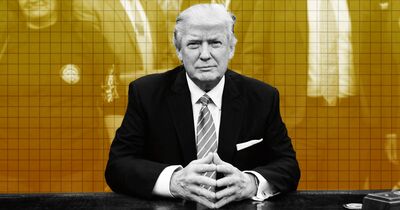On Thursday, the Health and Human Services department said it would cut the Affordable Care Act’s advertising budget by 90 percent, to $10 million, and would also reduce spending on groups that help customers find the appropriate insurance plan. The administration called the cuts necessary reductions for programs that have run their course and aren’t efficient.
Those who have studied the law or helped run it say otherwise. They say such drastic reductions look like efforts to let the program wither, as Trump has threatened, two months before sign-ups open.

Follow the Trump Administration’s Every Move
“It seems perfectly appropriate to review outreach efforts and see if they can be done more efficiently, but these cuts are quite large,” said Larry Levitt, a senior vice president at the Kaiser Family Foundation, a health research group. “There’s no doubt that cuts to outreach and advertising will result in more people uninsured.”
Obamcare’s markets, similar to other insurance pools, are designed around the idea that healthy people’s premiums help subsidize the sick. Advertising helps attract those healthy people, said Sarah Gollust, a professor at the University of Minnesota School of Public Health who’s studied the effects of marketing the health law.
“If the health-insurance marketplace ends up with more sicker people relative to healthier people, premiums would rise -- sending healthier people out of the marketplace and further exacerbating the problem of high costs for everyone,” Gollust said in an email.
Ineffective Ads?
The Trump administration said the Obamacare ads are ineffective, though it hadn’t formally studied them. Entering the law’s fifth year of providing coverage, most people who would sign up are already aware of the law, administration officials told reporters on a call Thursday.
“Judging effectiveness by the amount of money spent and not the results achieved is irresponsible and unhelpful to the American people,” said Caitlin Oakley, an HHS spokeswoman. Health insurance sign-ups under the law are scheduled to start on Nov. 1. This year, 12.2 million people enrolled in Obamacare plans through the state- and federal-run insurance markets.
Administration officials pointed to the fact that for 2017, even as spending on ads rose, enrollment ended up lower. The Trump administration, however, withdrew about $5 million of ads at the end of the 2017 sign-up period, which likely contributed to the enrollment decline.
The administration is also cutting funding for the “navigator” program, which provides funding to local groups to help individuals select ACA plans. The administration said the navigators received $62.5 million last year, while signing up 81,426 people, and funding for this year will be reduced by 39 percent.
More Work to Do
Joshua Peck, who helped run the healthcare.gov website that’s one of the main places people sign up for coverage, said that past study found the ads effective. Many potential enrollees weren’t aware of the program, he said.
“Why does Coca-Cola still advertise?” said Peck, the former chief marketing officer for the health website. “There was a tremendous amount of documented evidence of the efficiency of these dollars.”
Democrats, who have opposed President Donald Trump’s calls to repeal or destabilize the law, criticized the move.
“SABOTAGE,” tweeted Senator Chris Murphy, a Connecticut Democrat, minutes after the announcement.
“Certainly, it’s not going to help,” Colorado Democratic Governor John Hickenlooper said in an interview on Bloomberg TV. “What we all agree is, we want more people in the insurance pools because that drives down the premiums.”
The health insurance industry’s trade group in Washington, America’s Health Insurance Plans, also said effective federal support for the law was necessary.
“Effective education ensures that consumers understand their coverage options and encourages broader participation of healthy individuals,” said Kristine Grow, a spokeswoman for the insurance group.
Meanwhile, states that run their own enrollment markets have already been spending their own money on promotion. California, for example, has proposed spending more than $100 million on getting people to sign up for next year.
Fundamental Issues
Joe Antos, a health-care scholar at the conservative-leaning American Enterprise Institute, said the administration was right to cut the spending. The law has struggles beyond the issue of advertising, he said -- health insurers have pulled out of the markets, and the ones that stayed in are in many cases raising premiums.
“Everybody that’s going to sign up on the exchanges has already signed up,” Antos said. “Without substantial change in the way the ACA operates, that’s not going to change.”
Trump has called the law a failure, and has said the threat of the law’s demise could force Democrats to negotiate with him. Earlier this year, Republicans failed to repeal much of the law and replace it with their own, more limited program.
“As I have always said, let ObamaCare fail and then come together and do a great healthcare plan. Stay tuned!” Trump tweeted on July 18, about 10 days before the GOP repeal bill was scrapped after losing a key vote in the Senate.
The $10 million left in the advertising budget will go to “digital media, email, and text messages,” since those methods “have proven the most effective in reaching existing and new enrollees,” said the Centers for Medicare and Medicaid Services, which oversees much of the Affordable Care Act.
— With assistance by Hannah Recht

